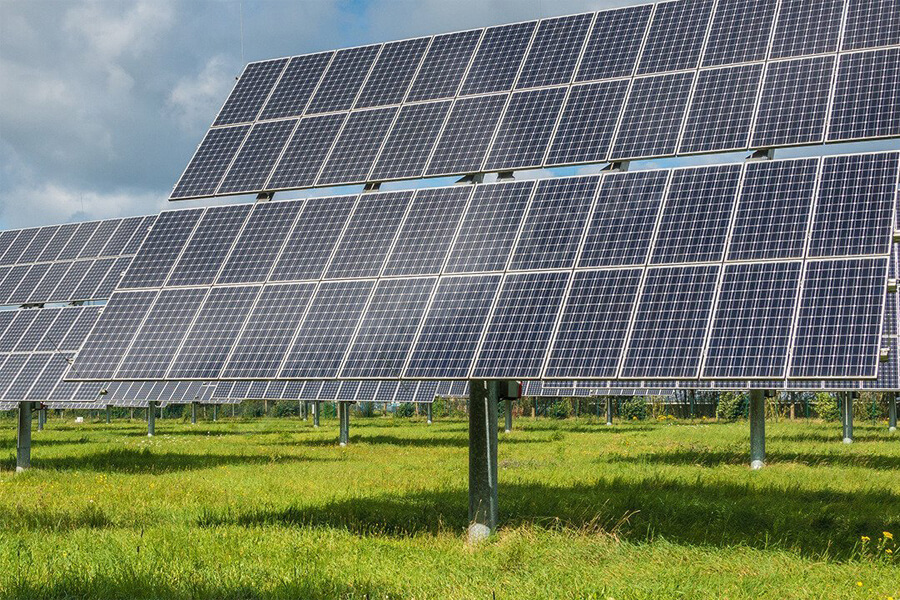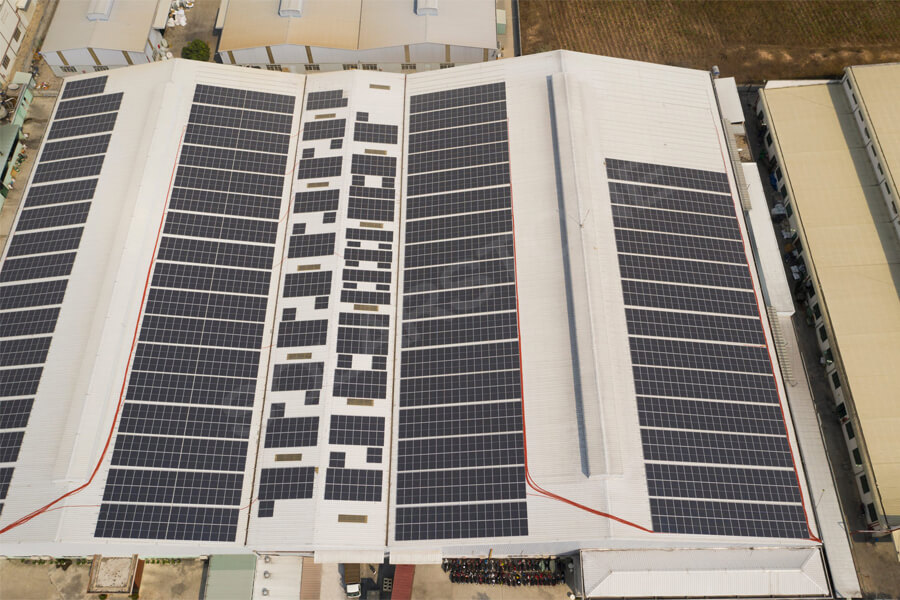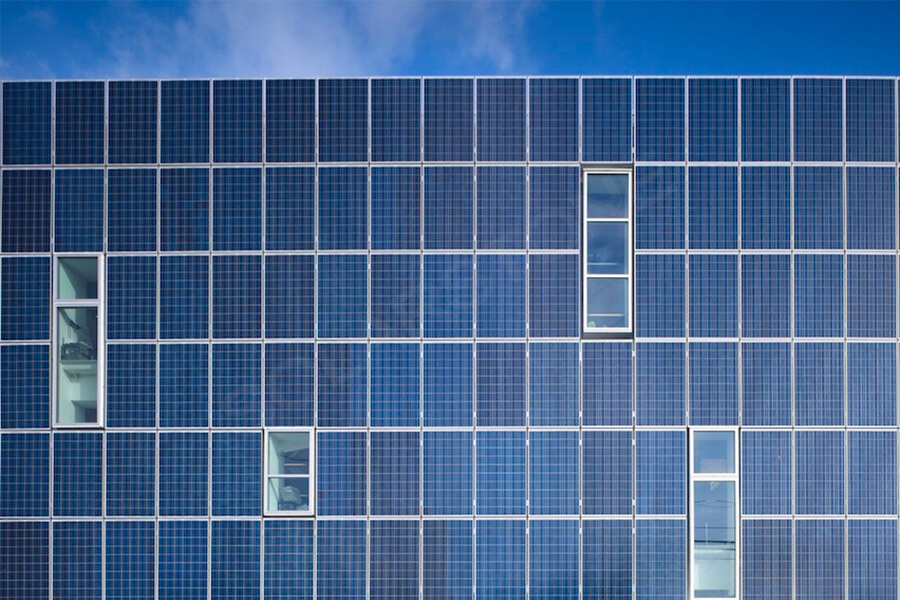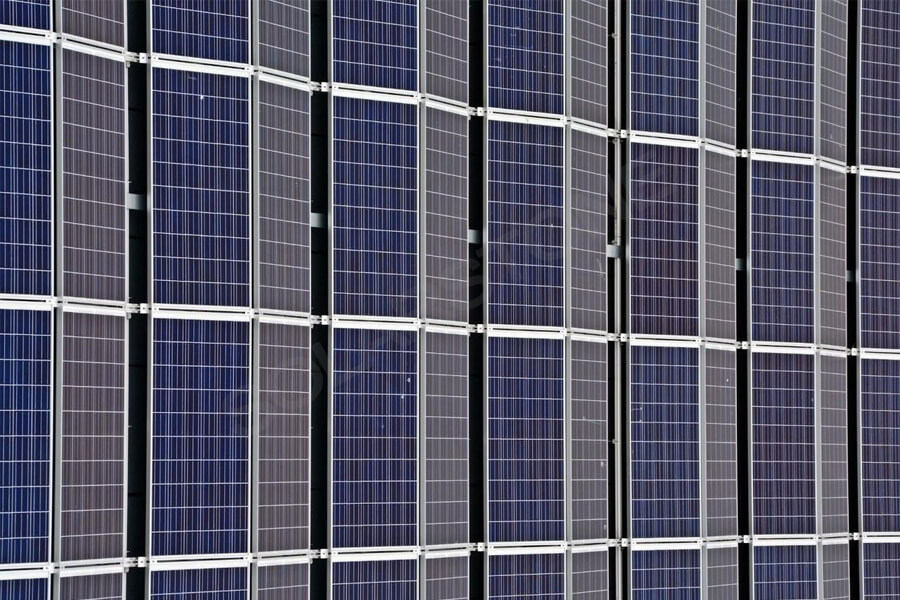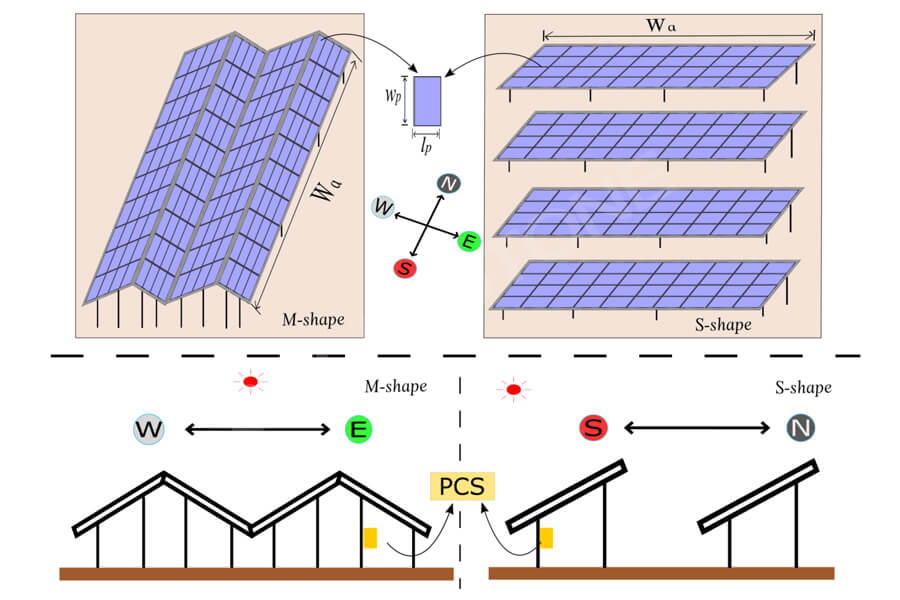What are the five main parts of a solar array?
Each solar panel has several main components and some optional components. Solar inverters, AC/DC disconnectors, solar panels and solar supports are important components of any installation.
If necessary, add solar power meter, battery, charger controller and solar cell storage unit.
1. Solar panel
Solar panels are probably the most prominent part of the solar system. Solar panels, also known as photovoltaic panels, are very obvious and critical to the success of any solar device. Each solar panel contains several solar cells, and a solar panel is composed of several solar cells.
Solar panels are common on the roofs of buildings and garages, but they can also be fixed to the ground. They can be placed at an angle to collect as much sunlight as possible during the day.
Depending on the manufacturer, solar panels can be produced from a variety of materials. Today, almost all modern solar panels use crystalline silicon. The different types of silicon are thin films, polycrystals and single crystals. For most new solar panel devices, single crystal panels are the industry standard. Glass, metal, plastic and wiring are additional materials.
Type of solar panel
The different types of solar panels used in solar arrays can be divided into the following categories
• Polycrystalline silicon panel combines the use of a variety of silicon crystals. They are a cost-effective alternative to single crystal panels, but they are inefficient.
• Monocrystalline silicon panel consists of only one crystal. They are the most efficient and industry standard solar panels. However, they are the most expensive option.
• Thin film solar cells are less common than polycrystalline and single crystal solar cells. Amorphous silicon is used to make these solar cells, which are the most flexible solar panels. If you need to place solar panels on a curved surface, these flexible solar panels may be a good choice. These are sometimes used for RV solar panels. However, they are the least efficient.
Although some other components need to be maintained and replaced over time, solar panels can last for decades. It is the most expensive and important part of your system. High quality solar panels will work for more than 25 years.
2. AC/DC disconnection
The AC/DC disconnector of the solar system is the electrical switch of the control system. You can use the system disconnect to turn off the power to the solar array. If you need to repair or maintain your solar panel, you may need to do this from time to time.
3. Inverter
Solar inverter is another important part of any solar energy system. The main function of the inverter is to convert the direct current generated by the solar panel into alternating current. Since most household appliances and equipment operate on AC power, this conversion is required. If you don’t convert DC to AC, you won’t be able to power everything in your home.
The inverter can prolong the service life of the solar system. However, it only has a 10-year warranty, while the solar panel can be used for 25 years. As the inverter is the most likely component to fail, it is worth investing in high-quality brands.
4. Charging controller
The charging controller is a small tool to control the power flow from the solar panel to the battery. The charging controller ensures that the batteries in the system can be safely charged to prolong the service life of the battery pack. MPPT (maximum power point tracking) and PWM (pulse width modulation) are two main forms of solar charging controller (PWM).
5. Solar batteries
The solar system may include solar batteries as optional components. Like ordinary batteries, solar batteries store energy for future use. Solar batteries store the energy generated during the day so that it can be used at night without sunlight. If you want or need to store a lot of energy, you can use the battery pack.
If your system generates a lot of energy, the battery can store it for a long time in case of emergency. Hybrid system is a form of solar energy configuration. If you are considering it, you’d better plan one from the beginning. It is usually not easy to integrate the battery into the grid connected system after installation.
If you connect the solar system to the grid, you do not need batteries. The grid connected system can obtain energy from the grid at night. If you have an off grid system and need power at night, you need to invest in solar batteries. Off grid cabins and small solar homes benefit from batteries.
Battery technology is a good solution for those who must use energy mostly at night. Batteries are more expensive to install, but in the long run, they will reduce your reliance on the grid, thereby reducing your electricity bill. On the other hand, if you have a feed in tariff, batteries are not the most cost-effective solution.
Some solar owners can take advantage of feed in tariffs, which your utility provider pays to deliver solar energy to the shared energy grid. You can put energy into the grid in the morning and pull it back in the evening to balance the cost.
Batteries are probably one of the most expensive components of a solar system. If your feed in tariff rate is high, it may not be economically feasible to store additional energy in the battery. The solar calculator can help you estimate energy use and determine which energy is best for your needs.
There are many battery substitutes in the solar business; The two most common battery chemicals are lithium and lead acid. You can use submerged or sealed AGM batteries in the lead acid category.
Solar batteries type
Plumbic acid
Lithium ion
Nickel cadmium
Each battery type has advantages and disadvantages, and price is also a factor. On the other hand, lithium-ion batteries are rapidly becoming one of the most common battery options because they require little maintenance. Compared with lead-acid batteries, lithium-ion batteries can store more solar energy in a smaller volume.
Other important components
Mounting frame and rack
Although racks and brackets are not electrical components, they are critical to your solar system. Your solar panels are connected to your roof or mounted using a rack and mounted on the ground. The shelf quality is the key, but the correct installation is more critical. If the panel is installed at an incorrect angle, the efficiency of the system may be reduced.
Solar support type
Roof bracket: Roof bracket is the most typical way to connect solar array to buildings (such as small houses, commercial buildings or houses). With roof accessories, rigid solar panels can also be installed on ships and vehicles, such as recreational vehicles and trucks.
Ground support: The basic ground support connects the solar array to the concrete pier closer to the ground to maintain stability. The panel is set at a fixed angle. However, they can be adjusted manually as the seasons change.
If you do not have enough roof space, you can select this alternative. However, both pole mounting and grounding panels require a lot of land. Therefore, such installations are more common in commercial or agricultural environments than in residential environments.
Pole mounting: This is an uncommon type of mounting that connects solar panels to poles in concrete. The pole mount lifts the solar panels above the ground and, in some cases, uses a tracking system that automatically tilts the solar panels to collect the most sunlight in a day and year.
Solar power meter
An optional component is a solar power meter, commonly referred to as power system metering. You can use a solar power meter to track how much solar energy your panel provides for your home. The power meter helps to understand and monitor the operation of the system. For optimal efficiency, you can troubleshoot, adjust, or repair the system when necessary.
Emergency power supply
Many people benefit from backup power, especially if they live in areas vulnerable to severe weather. For example, you might lose conventional power during a snowstorm or hurricane. At the same time, if there is little sunlight under these conditions, the solar output will be minimal. Solar batteries are good backup for conventional generators.


